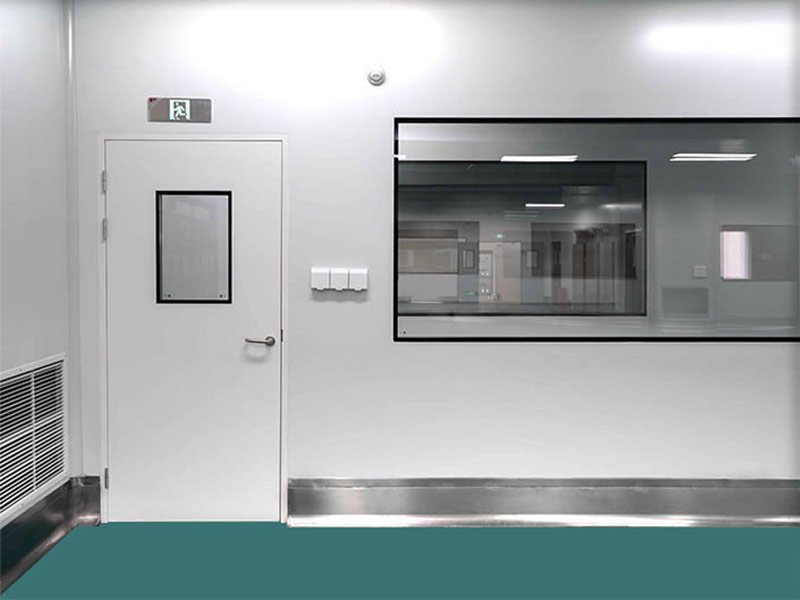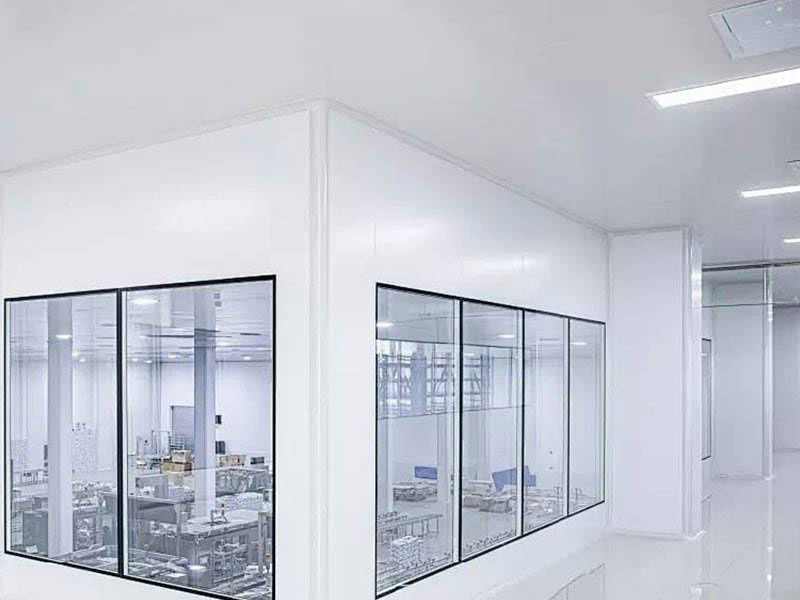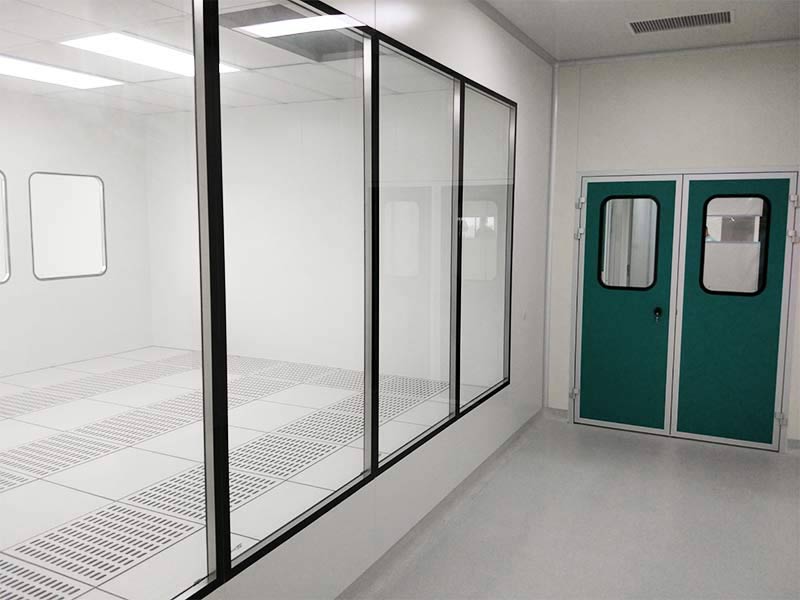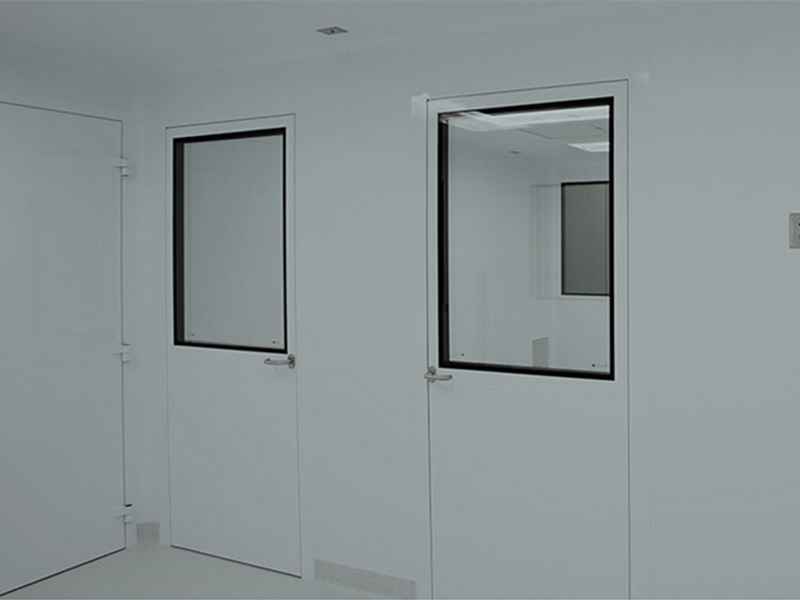Clean Room Commissioning Solution
The clean room commissioning stage belongs to the completion commissioning; our implementation is carried out in the empty state and static state, and the service items are provided: total air volume measurement, air volume balance, pressure difference adjustment, filter leak detection, cleanliness test, temperature and humidity test, noise test, illuminance test, electrostatic test, airflow pattern analysis, self-cleaning time test, pollution control analysis, sedimentation bacteria and planktonic bacteria test, system air leakage test, etc.

According To The Specification:
GB50591-2010 “Clean Room Construction and Acceptance Specifications”
GB50243-2002 “Code for Acceptance of Construction Quality of Ventilation and Air Conditioning Engineering”
GB/T25915-2010 “Clean Room and Related Controlled Environment”
ISO 14644_2006 Cleanrooms and associated controlled environments
The Importance Of System Debugging In The Clean Room Is Reflected In The Following Aspects
1. Find and solve problems in equipment, facilities, control, process, etc., so that the clean room can be put into normal operation; find problems, and correct design and installation defects.
2. To achieve the system design goals, that is, the various indicators of the internal environmental parameters of the clean room meet the design requirements; the most important guarantee to ensure the design quality.
3. On the premise that it meets the design requirements of various control parameters, reduce the operating cost as much as possible; ensure that the system operates in a state of low consumption and energy saving.
We carry out system integration after the equipment debugging is completed, focusing on the debugging of the purification air-conditioning system; it is necessary to complete the debugging of ventilation measurement and debugging, static pressure difference, filter leak detection, etc.; finally, the integration of automatic control complements the system functions. Finally, the air volume, exhaust air volume, pressure difference, HEPA leak detection, cleanliness, temperature and humidity, illumination, noise and other items meet the design and specification requirements.
The difference between the purifying air conditioner and the general air conditioner: the filtering and purification measures are increased, the air volume is too large, and the pressure is too high. The static pressure is high, the possibility of air leakage is high, and the system balance is difficult to control. Usually “from big to small, from small to big”.
Suggestion: The commissioning of the clean room is an important work related to the normal operation of the clean room and whether the benefits can be fully exerted. It has the characteristics of strong technicality and high difficulty, and requires professionals or professional institutions with various professional knowledge and long-term operation experience. Therefore, it is suggested that its debugging should be included in the process of project completion acceptance, and sufficient funds should be arranged to ensure the effective development of the debugging work.
Program And Features
Implement The Debugging Process:
-
Wind Speed And Air Volume: Average Wind Speed × Cross-Sectional Area Or (Electronic Air Volume Cover)
Unidirectional Flow Cleanroom: Multipoint Anemometer Method
Turbulence Clean Room: The tuyere method
Main pipe And Branch Pipe: Air pipe method: Pay attention to the length of the stable section: 3d~5d.
Electronic air volume hood
Standard: Total air volume: 0~20% Air volume of each air outlet: ±15% Fresh air volume: ±10%

-
Static Pressure Difference Debugging
Check that all doors are closed tightly.
The surrounding of the pressure measuring tube should be sealed as much as possible, and the tube should be extended from the cushion under the door as much as possible.
It is better to add a pressure gauge for important positions.
When measuring the clean area and outdoor, pay attention to the influence of wind and direction.
The requirements are carried out in order from high to low cleanliness. However, it should be adjusted from the outside to the inside during debugging.
Standard:
Different levels and between indoor clean areas and non-clean areas ≥5Pa (new version of GMP ≥10Pa)
Clean room and outdoor should be ≥10Pa
The cleanliness within 0.6m of the one-way flow door above class 100 should be qualified.
When the clean room directly has holes (conveyor belts) that communicate with the outside world, it should be measured by the pollution leakage flow rate ≥ 0.2m/s.
-
Determination Of Cleanliness
Conditions: The air volume and positive pressure are adjusted; the room should be cleaned as required, the biological clean room should be disinfected as required, and sufficient pre-cleaning (air blowing) time.
At most two people should enter in clean clothes, and try to be downwind as much as possible.
There should be 1-2 min stabilization time after moving the measuring point.
Layout: 0.5 square meters of area, rounded up.
Sampling Volume: Only relevant to cleanliness class.
When the sampling amount is large, continuous sampling and accumulation can be performed. When the sample size is small,the sampling time should be ≥1min, and the sampling volume should be ≥2L.
For each measurement point, sample at least 3 times at this point.
When the sampling is less than 9 points, the 95% UCL value is calculated, and the sampling data is more than 10 data sorting and simplification methods.
Standard:
Reference Specifications and Designs

-
Microbial Particle Detection
Condition: system debugging is completed, all operating parameters are qualified; determine the state during detection;
Carry out necessary cleaning and disinfection as required.
No more than two people are required to wear clean clothes during the test.
Ensure sufficient pre-cleaning time: ≥10min for level 5, ≥30min for level 6 or below,
Arrange plankton sampling points according to specifications.
Arrange the sampling points of sedimentation bacteria according to the specification.
Determine the minimum number of petri dishes by specification.
-
Leak Detection Of High Efficiency Air Filter After Installation
Condition: The data from factory inspection of high efficiency HEPA air filtration should be checked. Sometimes may not, for HEPA filters,
Available transmittance is 0.01%.
There should be sufficient particle concentration before the filter, which should be ≥3.5×104/liter (HEPA) or ≥3.5×106~107 (ULPA).
If the concentration is not enough, the particles should be supplemented, we use PAO or DOP.
Method: S-scan along the segment surface, ①distance 20~30mm ②probe moving speed 5~20mm/s.
Standard: Calculate the ratio M of the maximum leakage to the original concentration.
For HEPA filter M≤2×factory transmittance (M≤0.02%)
ULPA filter M≤3×factory transmittance
-
Pollution Leak Detection:
Object: For clean rooms with holes or clean rooms of different levels with holes.
Method: measure the wind speed in a reasonable flow direction should be ≥ 0.2m/s.
Note: There is a certain contradiction between this figure and the required positive pressure value of 0.5Pa pressure difference.
-
Air Flow Pattern Test
Measuring Point Location: vertical one-way flow, four sections to be measured: vertical, horizontal and two horizontal sections 0.8 and 1.5m away from the ground.
Horizontal One-Way Flow: Five sections are to be measured: longitudinal section, horizontal plane of work area, room center and section 0.5m away from the air outlet of the feeder.
Non-Unidirectional Flow: three sections, representative longitudinal and transverse sections at the center of the supply and return air outlets, and horizontal planes at the height of the work area.
Measuring Point Spacing: 0.2 ~ 1m
Methods: hanging lines, smoking, drawing
-
Determination Of Self-Cleaning Time
Atmospheric dust as the benchmark: When the cleanliness stops running for a period of time (or open doors and windows), the indoor concentration is similar to the atmospheric dust concentration in the non-clean area.
Artificial dust (cigarettes, orchid incense, etc.) as the benchmark: smoke at a height of more than 1.8m in the center of the clean room for 1 to 2 minutes, and stop smoking and stabilize for more than 1 minute.
Under the above conditions, close the doors and windows and activate the air purification system. Use the counter to measure timed readings just before power-on and as the power-on time continues until a low value is recorded steadily.
Standard:
There is a set of detailed calculations, which can be omitted. Generally, it can be considered qualified if it does not exceed 40 minutes.

-
Temperature And Relative Humidity Detection
Conditions: The purification air-conditioning system has been running stably for more than 24 hours, and the instrument accuracy should be suitable.
Method: The location should be 0.8m away from the ground, >0.5m away from the wall, or distributed according to the main work area.
It should be carried out continuously for 8 to 48 hours, and there should be a transition between winter and summer.
The non-thermostatic room can only measure one point in the center.
If there is a requirement for humidity fluctuations, it should be placed near the delivery, return, and air outlets and in the main working area for testing.
Standard: If there is a constant temperature requirement, more than 90% of the measuring points should be qualified.
A point that does not require constant temperature is acceptable.
-
Illumination Detection
Conditions: The light source needs to be stable, and the new fluorescent lamp needs to be used for more than 100 hours. Only measure general illuminance.
Method: The plane is about 0.8m away from the ground, the horizontal distance is 1-2m, and the distribution point is about 1m away from the wall. It can be synchronized with the cleanliness measuring point and recorded by drawing.
Qualified: In line with the specification or design requirements, the general uniformity should not be less than 0.7.
-
Noise Detection
Generally, only A-level noise (close to the human ear) is measured in the project, and the noise in the frequency range is measured when required.
Arrangement points: ≤50m2 room measurement center point, when more than 50m2 additional measurement point. 1.1m from the ground.
Standard: according to specification requirements: turbulent flow≤60dB(A), parallel flow≤65d(A),
Or according to specific design requirements, such as: water plants, pharmaceutical plants, a certain process can be high.










